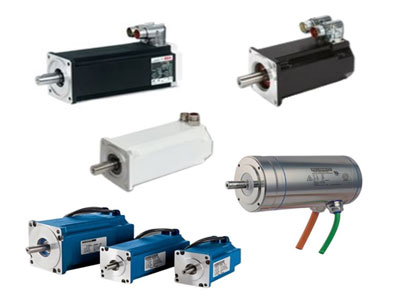What Type Is Servo Motor?
Key Takeaway
A servo motor is a type of motor that allows for precise control of angular position, acceleration, and velocity. It is powered by a servo amplifier and is used to apply torque or force to a mechanical system, such as an actuator or brake. Servo motors are essential for applications requiring exact motion control, such as in robotics, CNC machines, and automated manufacturing.
There are different types of servo motors, including AC servo motors, DC servo motors, and brushless servo motors. AC servo motors are known for their efficiency and high power capabilities. DC servo motors are simpler and often used in smaller applications. Brushless servo motors offer high performance and low maintenance. Each type of servo motor is designed to meet specific requirements in terms of precision, speed, and torque.
Overview of Servo Motor Types
Servo motors are highly versatile and essential in many applications due to their precision, reliability, and efficiency. These motors are designed to provide precise control over position, speed, and torque, making them invaluable in fields such as robotics, industrial automation, and remote-controlled devices. Understanding the different types of servo motors is crucial for engineers to choose the right one for specific applications. The main types of servo motors include AC servo motors, DC servo motors, brushless servo motors, and both synchronous and asynchronous servo motors. Each type has unique characteristics and benefits tailored to meet various operational demands and conditions. By grasping these differences, engineers can optimize performance and efficiency, ensuring the chosen servo motor meets the specific needs of their project.

AC Servo Motors
AC servo motors are known for their high efficiency and precision in controlling speed and position. They operate using alternating current and are equipped with advanced control systems that include feedback mechanisms such as encoders or resolvers. These motors are widely used in industrial automation, robotics, and CNC machinery because they provide smooth and accurate motion control.
One of the significant advantages of AC servo motors is their ability to handle high power applications with a high torque-to-inertia ratio, making them suitable for dynamic and demanding tasks. They are also durable and can operate under harsh conditions. However, AC servo motors can be more expensive and complex to set up and maintain compared to their DC counterparts. Their sophisticated control systems require precise tuning and understanding, which can be challenging for new engineers.
You May Like to Read
DC Servo Motors
DC servo motors are powered by direct current and are typically used in applications requiring precise speed and position control. They are simpler in design compared to AC servos and often less expensive. DC servos are popular in smaller scale applications such as robotics, conveyor systems, and simple automation tasks due to their ease of use and straightforward control mechanisms.
The primary components of a DC servo motor include the motor itself, a potentiometer, gears, and a control circuit. The potentiometer provides feedback on the motor’s position, allowing the control circuit to make precise adjustments. While DC servos are generally easier to use and maintain, they may not offer the same level of performance as AC servos in terms of power and efficiency, making them less suitable for high-power applications. However, their simplicity and cost-effectiveness make them an excellent choice for many standard applications.
Brushless Servo Motors
Brushless servo motors, also known as BLDC (Brushless DC) servos, represent an advanced type of servo motor that eliminates the use of brushes by using electronic commutation. This design offers several advantages, including higher efficiency, reduced wear and tear, and a longer lifespan. Brushless servos are ideal for applications requiring high reliability and low maintenance, such as in aerospace, medical equipment, and high-performance robotics.
The absence of brushes in these motors reduces the risk of mechanical failure and the need for regular maintenance, which is a significant advantage over traditional brushed motors. Brushless servos also provide higher torque and better speed control, making them suitable for demanding and precision-driven tasks. However, they are generally more expensive than brushed motors and require more complex control systems, which can be a barrier for some applications.
Synchronous and Asynchronous Servo Motors
Synchronous and asynchronous servo motors are distinguished by their operating principles and performance characteristics. Synchronous servo motors operate in sync with the frequency of the supply current, providing precise control over speed and position. These motors are highly efficient and are used in applications requiring exact timing and coordination, such as robotics and CNC machinery. They maintain a constant speed regardless of the load, which is essential for tasks demanding high precision.
Asynchronous servo motors, also known as induction motors, do not operate in sync with the supply current frequency. They are typically less expensive and simpler to use but do not offer the same level of precision and efficiency as synchronous motors. Asynchronous motors are suitable for applications where high precision is not as critical, such as in simple automation tasks and industrial processes where cost and ease of use are prioritized.
Conclusion
Choosing the right type of servo motor is crucial for achieving the desired performance and efficiency in any application. AC servo motors are perfect for high-power, industrial applications where precision and durability are paramount. DC servo motors are more suitable for smaller-scale applications requiring easy setup and cost-effectiveness. Brushless servo motors offer high efficiency, low maintenance, and excellent performance, making them ideal for demanding and high-reliability applications. Synchronous servo motors provide exact timing and coordination, essential for precision tasks, while asynchronous motors offer a cost-effective solution for less demanding applications.

